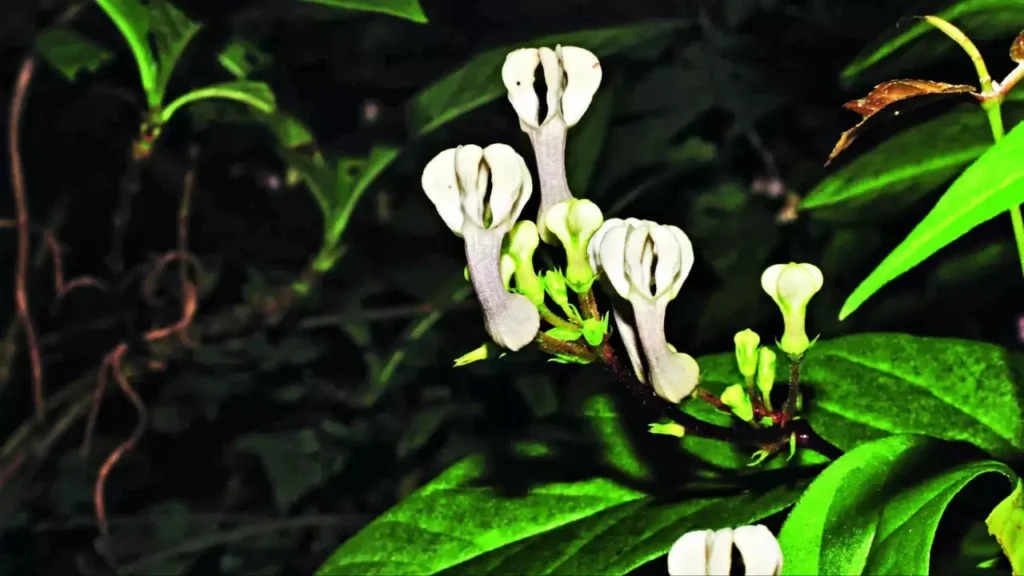A new species of flowering plant, Ceropegia Shivrayiana, has been discovered at Vishalgad in Maharashtra.
About Ceropegia Shivrayiana:
- Named to honor Chhatrapati Shivaji Maharaj, Ceropegia Shivrayiana is a rare and endemic plant found in India.
- It features unique, tubular flowers that are specially adapted to attract moths for pollination.
- This species is similar to Ceropegia lawii Hooker f. but is distinctive due to its climbing habit and hairy peduncles.
- It thrives in rocky terrains and can survive in nutrient-poor soils.
- The plant belongs to the Asclepiadaceae family, which is known for its many medicinal plants with significant ecological importance.
- Conservation efforts are crucial as the species faces threats from habitat loss.
About Vishalgad Fort:
- Vishalgad Fort, located in the Kolhapur district of Maharashtra, is historically significant and was an important stronghold of the Maratha Empire.
- Originally built in 1058 by Shilahara king Marsinh, the fort has been known as Khilgil and was controlled by various dynasties such as the Seuna Yadavas of Devagiri, Allauddin Khilji, the Vijayanagar Empire, and the Adil Shahi dynasty.
- In 1659, Shivaji captured the fort from Adil Shah and renamed it ‘Vishalgad‘.
- The fort houses several notable structures including the Dargah of Hazrat Sayed Malik Rehan Meera Saheb, Amruteshwar Temple, Shri Nrusinha Temple, and Sati’s Vrindavan, attracting thousands of visitors annually.
Ref: Source
| UPSC IAS Preparation Resources | |
| Current Affairs Analysis | Topperspedia |
| GS Shots | Simply Explained |
| Daily Flash Cards | Daily Quiz |
Frequently Asked Question:
What is the common name for Ceropegia huberi?
The common name for Ceropegia huberi includes “String of Hearts,” “Chain of Hearts,” and “Rosary Vine”
What is the structure of the Ceropegia flower?
The structure of the Ceropegia flower generally features small, tubular blooms adapted to attract specific pollinators, with a distinctive appearance marked by an elongated tube and petal formations that can vary among species.
What is Gymnosperm?
A Gymnosperm is a group of seed-producing plants that includes conifers, cycads, Ginkgo, and gnetophytes. They are characterized by seeds that are not enclosed by an ovary.



